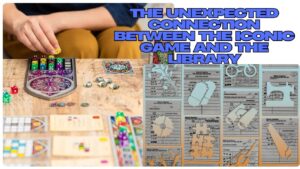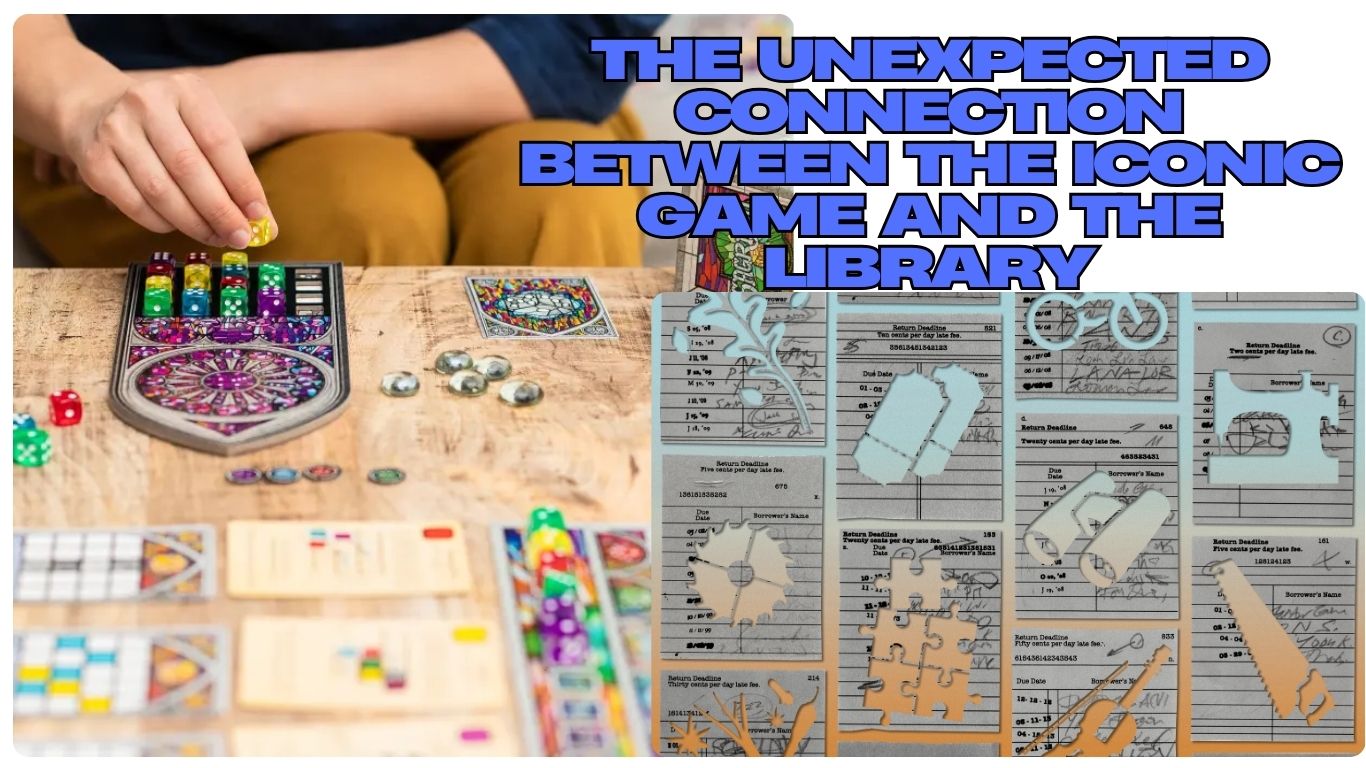Imagine walking into your local library, the familiar scent of old paper and the quiet hum of turning pages filling the air. You browse the shelves, perhaps looking for a new thriller or a classic novel. But then, nestled amongst the books or perhaps displayed on a table, you spot it: a Simon game. That iconic square with its four brightly colored buttons, waiting to challenge your memory. It might seem out of place at first, an unexpected guest in the hushed halls of literature. But the presence of a Simon game in the library isn’t as random as it might seem. In fact, it highlights the evolving role of the modern library as a hub for learning, engagement, and even a bit of unexpected fun.
Finding a Simon Game Amongst the Books
The sight of a Simon game discovery in a library might initially raise an eyebrow. Libraries are traditionally associated with books, quiet study, and the pursuit of knowledge through reading. So, what’s a classic memory game doing there? The answer lies in the modern library’s mission to serve its community in diverse and engaging ways. Libraries are no longer just repositories of books; they’re dynamic spaces offering a wide range of resources and programs designed to foster learning, creativity, and social interaction.
A Simon game could be part of a library’s collection of educational toys and games available for borrowing, much like a board game or a puzzle. It might be featured in a special library programs aimed at children or seniors, focusing on memory enhancement and cognitive skills. Perhaps it’s part of a retro tech exhibit, showcasing the evolution of electronic entertainment. Or maybe, just maybe, it’s a cleverly placed interactive element designed to surprise and delight visitors, reminding them that learning can be fun and engaging in unexpected ways. The presence of a Simon game encourages learning through play at the library, breaking down traditional notions of what a library experience can be.
The Library’s Evolving Role
The inclusion of a Simon game underscores the transformation of the modern library. Libraries are adapting to the changing needs of their communities by offering resources and experiences that go beyond the traditional book loan. This includes providing access to technology, hosting workshops and events, and creating welcoming spaces for people of all ages to connect and learn.
Libraries are increasingly focusing on community engagement, offering programs that cater to a wide range of interests and age groups. From story times for toddlers to coding classes for teens and memory workshops for seniors, libraries are becoming vibrant centers for lifelong learning. The Simon game, with its ability to engage different age groups and its inherent educational value, fits perfectly into this evolving landscape. It’s a tangible example of how libraries are embracing interactive learning and seeking innovative ways to connect with their patrons.
The Underlying Principles
While seemingly disparate, the Simon game and the library share some fundamental underlying principles related to memory, sequencing, and pattern recognition – all crucial aspects of learning and information processing.
The Heart of Both
At its core, the Simon game is a test of memory. Players must remember and recall an increasingly complex sequence of lights and sounds. Similarly, libraries are built on the principle of preserving and providing access to information that needs to be remembered and recalled. Whether it’s remembering a book title, a historical fact, or a research paper, memory in libraries is paramount. The Simon game can be seen as a playful way to engage with and strengthen these fundamental cognitive skills needed for information recall.
Finding the Right Order
The Simon game challenges players to remember and replicate a specific sequence. Libraries, too, rely heavily on sequencing and organization. Books are arranged according to specific classification systems, information is presented in a logical order, and research often involves following a sequence of steps. Library organization ensures that information is accessible and retrievable. The Simon game subtly reinforces the importance of order and sequence, skills that are transferable to navigating the vast resources of a library.
Unlocking Information
Success in the Simon game often involves recognizing patterns within the sequences. Similarly, effective learning and research in a library often require identifying patterns in information, making connections between different sources, and understanding underlying structures. Pattern recognition in learning is a crucial skill for making sense of complex information. The Simon game, in its simple yet engaging way, can help to develop this cognitive ability, which is essential for finding information and developing strong research skills.
Educational Applications in the Library
The Simon game isn’t just a fun diversion; it can also serve as a valuable educational tool within the library setting. Its inherent focus on memory and sequencing makes it suitable for various learning applications.
Early Literacy and Sequencing Skills
For younger children, the Simon game can be a fun way to develop early literacy games and sequencing for kids. Recognizing and repeating the patterns of lights and sounds can help to build foundational skills for understanding sequences in language and storytelling, often incorporated into library story time sessions.
Memory Training for All Ages
Libraries often host workshops and programs for different age groups. The Simon game can be incorporated into memory improvement workshops for adults and seniors, providing a hands-on and engaging way to exercise their cognitive abilities. Promoting brain health at the library through fun activities like the Simon game can be a valuable service for the community, particularly in senior programs.
STEM Learning and Coding Concepts
Believe it or not, the Simon game can even be linked to STEM activities at the library. The underlying logic of the game, with its sequences and patterns, can introduce basic concepts related to algorithms and coding. Libraries offering coding games or workshops could use the Simon game as a tangible example of how sequences and patterns are fundamental to computer programming and other logical puzzles.
Libraries Embracing Interactive Learning
While a specific “Simon game library” might not be a common term, many libraries are actively incorporating games and interactive elements into their programs and collections. You might find library game programs featuring board games, video games, and even escape rooms designed to promote problem-solving and teamwork. Interactive exhibits are becoming increasingly popular, offering hands-on learning experiences for visitors of all ages. These community library events often aim to make learning more engaging and accessible. The inclusion of a Simon game would be a natural extension of this trend towards learning through engagement.
The Value of Play in Learning
Experts in education and cognitive development consistently emphasize the importance of play in the learning process. Dr. Maria Montessori, a renowned educator, famously said, “Play is the work of the child.” Expert opinion on play highlights its role in fostering creativity, problem-solving skills, and cognitive development. The Simon game, as a form of play, aligns with these principles, offering a fun and engaging way to exercise the brain. The cognitive benefits of games are well-documented, showing that playful activities can enhance memory, attention, and other crucial cognitive functions. Libraries that incorporate games like Simon are tapping into the power of learning through interaction and aligning with the principles of educational psychology.
The Impact of Games on Cognitive Skills
Numerous studies have explored the positive effects of games and puzzles on cognitive abilities. Research on memory games has shown that regular engagement can lead to improvements in working memory and attention. Cognitive benefits of puzzles, including those that involve sequencing and pattern recognition, have been linked to enhanced problem-solving skills and cognitive flexibility. While specific studies on the Simon game in a library setting might be limited, the broader impact of games on learning is well-established. This brain training research supports the idea that incorporating games like Simon into library programs can be a valuable way to promote cognitive health and learning across different age groups.
Finding Your Own “Simon Game” in the Library
While you might not find a dedicated section labeled “Simon Games” in your local library, the spirit of the game – engaging your mind, testing your memory, and learning through interaction – is likely present in various forms. Explore the library’s collection of puzzles and games, check their program schedule for workshops or events that focus on memory or cognitive skills, and be open to unexpected opportunities for learning and engagement. The library resources available are vast and varied, offering countless ways to engage in community learning and explore your library. Embracing the idea of lifelong learning often involves finding fun and engaging ways to keep your mind active, and a Simon game in the library could be just the spark you need.
The Unexpected Harmony of Lights, Sounds, and Literature
The presence of a Simon game in the library, while seemingly unusual, highlights the evolving and dynamic nature of these vital community institutions. It underscores the library’s commitment to providing diverse and engaging learning experiences for people of all ages. By embracing interactive elements like the Simon game, libraries are demonstrating that learning can be fun, accessible, and even a little bit surprising. So, the next time you visit your local library, keep an eye out for unexpected opportunities to engage your mind and perhaps even challenge your memory with a familiar flash of colored lights. The connection between the Simon game The library might just open your mind to new and exciting ways of learning and interacting with the world around you.
